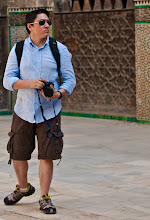What to take
- Camera and a 70-200 telephoto lense (or close to that range)
- Walking boots and hat
- Food and Water
- Sun block
- Get a program to assess the circuit
Tips
- Approach static classic car as you would human portraits. Use a zoom lens and an aperture of around 5.6 or 8 to throw the background out of focus and keep the car the focal point
- Shooting from a low angle adds impact
- Soft clouds make give smoother shadows and texture to the metal shapes and curves while early lighting is much more flattering than the light of midday
- The small details on a classic car are often exquisite. Bonnet mascots, dashboards, lights and bodywork curves are all great reasons to bring a macro lense. Use an aperture of f/8 at close quarters to give a smooth out-of-focus background, while keeping the main subject sharp.
- Be aware of people wondering in the shot, unwanted reflections can ruin a great composition
- If there are some racing involved, get early to the pits to get shots of mechanics these make for great B&W shots,
- Also on racing, get to the circuit early and keep an eye on the sun direction (be prepared to move around as the sun does)
- Pack enough memory cards to really practice that panning technique and vary shutter speeds between 1/1250 secs and 1/500 secs depending on the speed of the car.
- For dealing with crowds a good trick is to work with them, bring a tripod with a shutter speed of 2 secs and at f/22 will make the car stand out from the blur of the crowd
- Ensure you take pictures of clean cars, they are much more photogenic that even the midly dirty ones.
- Shoot details early in the day before dust and fingerprints appear
- Get to know the owner they might be open to the idea of a separate photo shoot later, outside of the event
- Understand what you are shooting, do your homework and get to know the famous or historically important cars seek out rare cars as your pictures can make it part of historical records
- Work with available light, early morning light is very flattering for the metal on the car.
- A cloudy day with a touch of fill-in flash is preferable to direct sunshine.
- Fill in the frame with color and detail. Simple frame filling shots are often the most striking. Concentrate on one detail, color or shape, with classic cars most details are exquisite and well worth a shot)
- Take care when shooting reflections -look for shapes and textures reflected in shiny paintwork and mirrors
Be aware of reflections
Focus on the details







0 comments:
Post a Comment